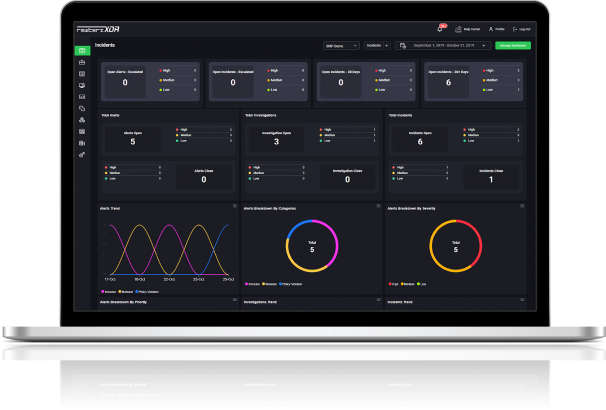

FortiOS SSL-VPN Vulnerability Exposes Full VPN Settings
June 10, 2025
NJRAT – Active IOCs
June 10, 2025
FortiOS SSL-VPN Vulnerability Exposes Full VPN Settings
June 10, 2025
NJRAT – Active IOCs
June 10, 2025Severity
Medium
Analysis Summary
Quasar malware is a Remote Access Trojan (RAT) that is often abused by cybercriminals to take remote control over users' computers for malicious purposes. The Quasar RAT was first discovered in 2015 and is known for its ability to evade detection by most anti-virus software.
The Quasar RAT is typically spread through phishing emails or other social engineering tactics. Once a victim clicks on a malicious link or downloads a malicious file, the Quasar RAT will be installed on their computer without their knowledge.
Once installed, the Quasar RAT allows the attacker to perform a variety of malicious actions, including:
- Viewing and manipulating files on the victim's computer
- Recording keystrokes and stealing login credentials
- Taking screenshots and recording audio and video from the victim's webcam and microphone
- Installing other malware or tools to further compromise the victim's computer or network
- Using the victim's computer as a part of a botnet to launch attacks on other targets
To protect against the Quasar RAT and other similar types of malware, it is important to practice good cybersecurity habits, such as avoiding suspicious emails and links, keeping anti-virus software up-to-date, and regularly backing up important files.
Impact
- Data Theft
- Exposure to Sensitive Data
Indicators of Compromise
MD5
edf5ee6173907a5c75650016186ea5a8
c7a64827a51b9e2b028cc2a96bbe6ba2
995defeeccfd84474b19d025302803ca
SHA-256
cd425ba34aa2ac7f31b6c498b09780cd7bacb7d7826cdc119fd6a35e95ee8700
c598101df884baa2a9db9162b00fe4ab7adf469ae87d764e6d8b210fe095e565
92ed237877e5562c06bb59b99e8e51c46d87308645ecadcba9ff7cdeccaf2ce7
SHA1
8dabd536d13a57364812eb9c8d413c50b8788b8e
32f77327ba5eb6251d90aedd7ebe144b2cd80677
5406ab05a5632908b3f950796c895da4146460be
Remediation
- Block all threat indicators at your respective controls.
- Search for indicators of compromise (IOCs) in your environment utilizing your respective security controls.
- Do not open emails and attachments from unknown or suspicious sources.
- Maintain cyber hygiene by updating your anti-virus software and implementing a patch management lifecycle.
- Enable antivirus and anti-malware software and update signature definitions on time. Using multi-layered protection is necessary to secure vulnerable assets.








